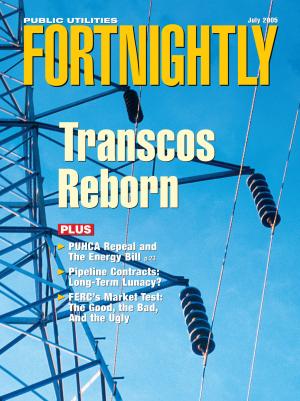The SEC denies approval of the AEP/CSW merger. What will that mean for industry consolidation?
Dan Scotto is president and senior energy advisor at Whitehall Financial Advisors LLC, where he specializes in providing strategic advice and council to corporate and investment clients. He can be reached at danielscotto@optonline.net.
What's wrong the Public Utility Holding Company Act of 1935 (PUHCA)? Perhaps the date! On May 3, 2005, a Securities and Exchange (SEC) administrative law judge (ALJ) handed down a ruling that denied the application of American Electric Power Co. (AEP) seeking approval of its acquisition of Central and South West Corp. The ALJ concluded that AEP did not satisfy the requirements pursuant to Section 10 of PUHCA. Simply put: the merged AEP/CSW "does not constitute a 'single integrated public-utility system'" under the Act, according to the ruling.

Beyond the implications for any single company, the ALJ's decision illustrates the polarization between energy policy and legislation (namely, PUHCA). As such, in order to underwrite the nation's energy future, investors need some reassurance that the industry is operating under contemporary economic, social, and technological advances, rather than under depression-era rules.
The 1935 act clearly did not contemplate a competitive marketplace for electricity. Quite the contrary. Now the SEC judge's opinion has resurrected PUHCA as an investor concern by creating uncertainty over a merger that closed five years ago.

